Sikhism is a religion that exists primarily in India. Some say it is a combination of Hinduism and Islam. It is the fifth-largest religion with 20 million followers. There were times when the Sikhs had a separate state and other times faced severe persecutions. Amritsar, where their famous Golden Temple stands was the scene of a cruel massacre in 1919. Reginald Dyer, “the butcher of Amritsar” being afraid of the Sikh insurgency, ordered to shoot into the crowd in the Jallianwala Garden. Hundreds of people, including women and children, died. In 1984 Indira Gandhi (Prime Minister of India), ordered to attack the Golden Temple that the Sikh used as a defensive bastion. She wanted to suppress their attempts for independence. In this article, you find everything about the Sikh religion, temples, the Sikh way of life, and the bloody part of Sikh history.
90% of Sikhs live in India, accounting for less than 2% of the total population. Nonetheless, they play an essential role in Indian society. From the British period until today, Sikhs are esteemed members of the national army and police. They are successful entrepreneurs, drivers, or even engineers and athletes. Most Sikhs are well off and leave a mark in every area, be it agriculture, army, sports, industry, commerce, medicine, or engineering. Their entrepreneurial spirit and desire for adventure have made them settle in almost every country in the world.
30 interesting facts and stories that you should know before going to India
The Gurus and the belief of the Sikh religion
Guru Nanak Dev Ji founded Sikhism in the 15th century. He traveled the Eastern world, preached equality between people and religions. Then more preachers (gurus) followed him. Before his death, the tenth Guru Gobind Singh compiled the holy book of the Sikh community, the so-called Shri Granth Sahib. The Sikh consider it as their last guru. This code ensures coherence in the practice of the religion.
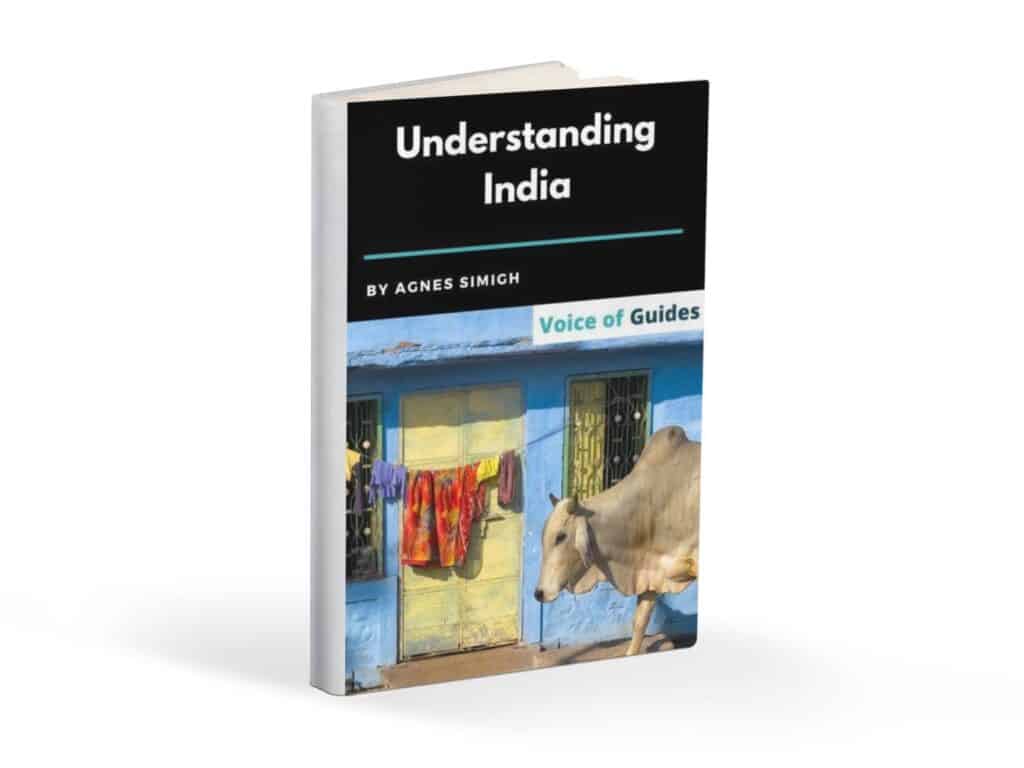
The ten gurus, also known as teachers or masters, are spiritual leaders and mediate between God and believers. The Sikh gurus played an active role in work-life and did not abandon their community in quest of salvation. Sikhs celebrate the anniversary of the birth and death of the ten gurus, the inauguration of the holy book as a guru, the Sikh martyrs, and major events in their history.
They are monotheists. They believe in a universal, all-powerful, invisible God, the Waheguru. Unlike Hindus, they do not worship God as an idol, and there no priests.
What is the Sikh way of life?
Any woman, male, regardless of religion, race, social status, can convert to the Sikh religion.
The Sikh religion incites its devotees to live a practical life with the ultimate goal to serve humanity, turn with fraternal love to all of their fellow human beings. They often organize food distribution to the poor in the cities or case of natural disasters. Since Sikhs have always spoken out for the disadvantaged, the wealthy class often despised them in their 500-year history. They faced persecution under the Mughal rule, and blood money was offered for every Sikh, alive or dead.
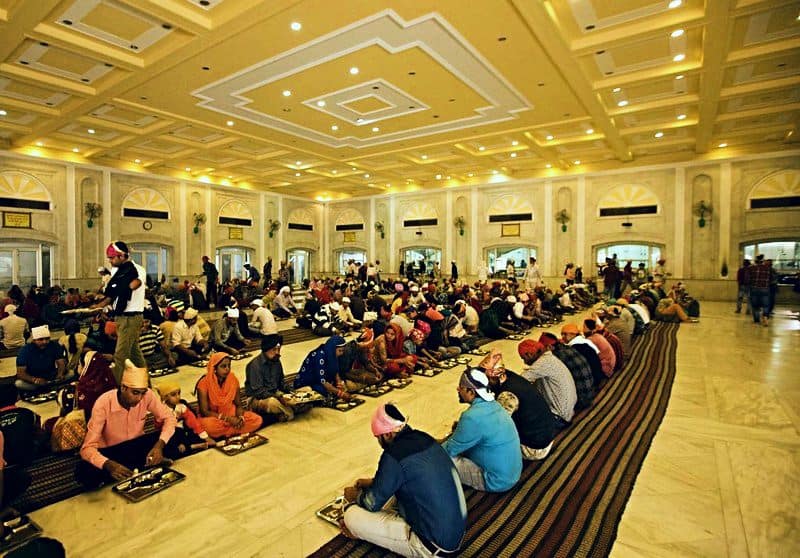
The Khalsa Aid humanitarian organization was founded by Sikhs in London in 1999 to support Kosovo refugees fleeing the Serb troops. The organization donated tons of food, clothes, and money to Kosovo.
Sikhs are not part of the Hindu caste system. Women have an equal role in Sikh society. Unlike in traditional Hindu families, the birth of girls is not disadvantageous. Widowed women are also not secluded from society. Despite this, the birth of a son is favored by the Sikh as well.
Although officially banned, the tradition of dowry is still alive in rural India. But dowry is not part of the Sikh culture.
Births, name giving, baptism, marriages, and funerals are the most relevant events for Sikhs. There are no strict procedures, but usually, they read from the holy book during such occasions.
Sikhs are forbidden to smoke. Even carrying tobacco is not allowed in Sikh temples. They do not drink alcohol, they do not gamble, and many of them are vegetarians.
Like Hindus, they cremate the dead and throw the ashes into a nearby river or a canal. They do not consider any rivers as sacred like the Hindus.
The five components that a Sikh Kalsa must wear
There are two types of Sikh people. The Khalsas undergo a baptism ceremony. They have to drink the sacred Amrit drink (sugar water stirred with a dagger) in the presence of 5 Khalsa Sikhs and the Guru Granth Sahib, the holy book. From then on, initiated Khalsa shall never remove any hair from any part of the body, shall not use tobacco, alcohol, or any other intoxicants, shall not eat the meat of an animal slaughtered in the Muslim way. He is required to wear the physical symbols of a Khalsa at all times.
The officially initiated Sikh Khalsa man distinguishes himself by wearing “five K’s.”
- 1. Kesh (uncut hair): Sikh men do not trim their hair and beard. Power is a symbol of a simple life, and Sikhs bow only to God but not to the barber. Under the turban, their long hair is twisted and tied. Women should not shave their hair or even their eyebrows.
- 2. Kara (Steel Bracelet): Symbol of belonging to the Guru. It is made of steel, not gold or silver showing that it is not a traditional piece of jewelry.
- 3. Kanga (Wooden Comb): A symbol of pure body and mind as it keeps the uncut hair clean.
- 4. Kaccha (cotton underwear): It was the practical cloth of Sikh warriors during the 18th-19th century wars.
- 5. Kirpan (steel sword or dagger): It does not have a specific shape and size. They place it under the dress or in the sleeve. It symbolizes the protection of the good, the weak, and the fight against injustice. Devout Sikh men get the kirpan (dagger) when they are about five years old and are not supposed to take it off even when they sleep.
The Sikh turban
Part of the Sikh does not swear to follow the strict rules applicable to Khalsa. But they are also considered Sikhs as they follow the principles of the religion and participate in prayers. They do not wear all the five elements of traditional clothing.
Some do not wear a turban at all. In this case, it is impossible to define his religion. The color of the turban is not relevant.
It can be pink, purple, blue, or red, according to taste, and to match the outfit. The turban gives an elegant look for the Sikh men. They usually tie it every day but often take it off and put it on like a hat. For sports and small children, they tie the turban differently. It looks like a little ball on their head. In India, motorcyclists must wear helmets. However, the turban does not make it easy to wear. So Sikhs are the only ones who are exempt from the regulation.
The Sikh temples (gurudwara)
Since Sikh temples are architecturally similar, you can easily spot them. Sikh temples called “gurudwara” („door to the guru”) are usually made of white marble and decorated with distinctive domes with a yellow triangular holy flag, the Nishan Sahib on the top. The double-edged sword on it indicates the political and spiritual sovereignty of the Sikh. The Sikh had a warlike attitude. At the end of the 18th century, they even created an independent military state that existed between 1799 and 1839. Only the British could end their independence.
Helping the poor and needy is one of the core teachings of the Sikh religion, which is why every Sikh temple included a large community kitchen (Langar). Here they welcome anyone regardless of gender, religion, and caste.
Amritsar – the Golden Temple
The main temple of the Sikh minority, the Golden Temple (Sri Harmandir Sahib) stands on the shore of a sacred lake in Amritsar. Amritsar means „the holy nectar’s basin”. Guru Nanak, the founder of Sikhism, meditated on the lakeshore, and after his death, his followers regularly visited the place. The ceiling of the 16th-century church was later decorated with precious stones, and in 1830 they covered it with 162 kg of 24-carat gold. In the 1990s, an extra 500 kilogram of gold, worth 1.5 billion rupees, made it live up to its name, the Golden Temple. The continuous chanting of religious mantras from morning till evening creates an indescribable dive and touching atmosphere. Pilgrims in large numbers dip in the holy lake that surrounds the temple and symbolically clean their souls. Many even drink it because it has a healing effect.
The Langar of the Golden temple is the largest free kitchen in the world. They distribute 100,000 portions of food daily free of cost regardless of religion, race, and caste. The dishes are freshly prepared, are simple vegetarian dishes such as rice, dal (lentils), vegetables, chapati (Indian bread). At the end of the meal, one must wash the metal dish himself. In the main temple in Amritsar, Sikh volunteers do everything from cooking to washing, who in many cases are successful businessmen.
Jallianwala Bagh, the massacre of Amritsar
On 13th April 1919, Reginald Dyer, the “the butcher of Amritsar” ordered to shoot into the crowd where hundreds of people died, including women and children. It was the bloodiest episode of Sikh history.
During the First World War, the British and the Sikh had a pretty good relationship. Many Sikhs were fighting in the British Army. A total of 1.25 million Indians fought along with the British in Europe, Africa, and the Middle East. But the war caused enormous human and financial losses. Nearly 43,000 Indians died during the wars. So the Indians started to seek more and more independence.
The Sikhs became angry that the British maintained the emergency measures introduced during World War II in peacetime as well. The Sikh started a peaceful protest in the Jallianwala Garden. But the British commander, Reginald Dyer ordered to shoot into the crowd. He targeted the few gates that remained open and through which people tried to escape. There is no precise information on how many people lost their lives that day. The British reported 379 deaths, but 1300 may have lost their lives, including women and children. This cruel massacre shook the whole nation. This case pushed Mahatma Gandhi to launch his „non-cooperation movement” against the British.
On that day, at the Baisakhi Festival, the Sikhs, Hindus, and Muslims get together every year in Amritsar, and so happened that 15-20 thousand people were in the park. Many people tried to escape from the shooting by jumping into the wells in the garden. According to the placard placed on the spot after independence, 120 dead bodies were pulled out of the wells later.
When Rabindranath Tagore, a famous Indian writer, learned about the events of the 22nd of May, he decided to reject that the British make him into a knight. The reason was the brutal action taken by the British against the people of Punjab.
The memorial for the victims
In 1961, a memorial for the victims was erected. The bullet marks are still seen on the wall surrounding the park and on the buildings nearby. The well in which many people jumped to save their lives is also part of the monument. After the event, the British House of Lords welcomed the general as a hero, but the Investigation Committee made him resign. According to many historians, this definitively pushed the British to start to retreat from India.
Queen Elizabeth II visited the site on the 14th October in 1997 in saffron color dress, which is of religious importance to Sikhs and Hindus. She took off her shoes, placed a wreath, and expressed her honest regret in her speech in the name of her nation. David Cameron was the first British prime minister to visit Amritsar in 2013 and marked the massacre as a “shameful event in British history.”
Sikh independence aspirations
India gained independence on the 15th of August 1947 by the secession of Pakistan. Since Pakistan became a state of Muslims, a large wave of migration started immediately after independence. Sikhs and Hindus living in the new Pakistan migrated to India, whereas India-based Muslims moved to Pakistan. The massive change of population demanding millions of death toll made Mahatma Gandhi go on hunger strike to reconcile Hindus and Muslims. Most Sikhs ended up in Punjab state in northern India, where they still make up 40% of the population. Many of them settled in the capital, Delhi, but they did not go further to the south. Thanks to the Sikh, Punjab has been transformed into a fertile agricultural area. Punjab is still one of the principal agricultural centers in the country.
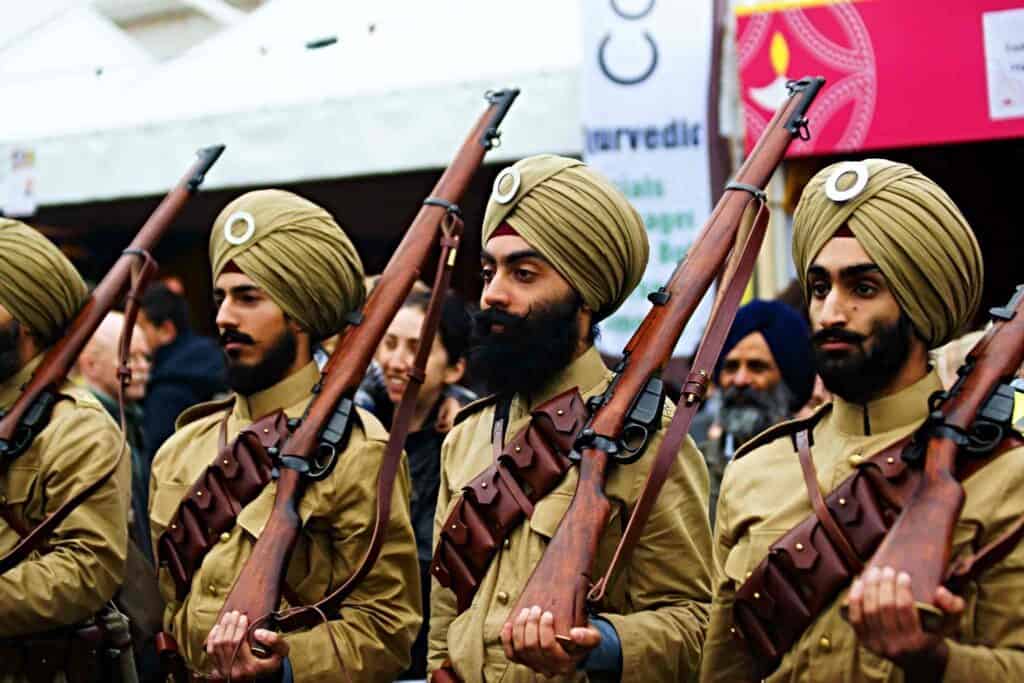
With time the Sikh wanted to gain more autonomy, and the extremist separatists, who do not refrain from armed attacks, also appeared. The Pakistani secret service supported these movements with money, weapons, and advice.
Indira Gandhi and the attack of the Golden Temple
Prime Minister Indira Gandhi initially had a good relationship with the Sikh community. But the relationship changed when the Sikh demanded greater autonomy. Indira Gandhi did not support this anymore and stepped up harder against them. The deteriorating Hindu-Sikh conflicts resulted in many times deadly confrontations.
A quasi insignificant incident made Indira Gandhi launch the cruel military operation. The Sikhs asked the Hindu merchants not to sell cigarettes near their sacred Golden Temple, forbidden by the Sikh religion.
But the Hindus refused to obey. Then, the Sikh hanged the head of two cows, the holy animal of the Hindus, in front of their temple. There is the biggest insult for a Hindu.
Bhindranwale was the leader of the Sikh Separatist movement. The Indian police already prosecuted him due to the suspect of murder. In the hope of shelter, he occupied the Golden Temple with his 200 companions. On the 3rd of June 1984, a 36-hour curfew in Punjab suspended the bus, train, and air traffic. They switched off the electricity, and Amritsar turned into complete darkness. Sikh militants protected the area around the temple. The Indian Army started the „Blue Star operation” and penetrated the temple with tanks two days later, and eliminated the Sikh resistance. They acted on the order of Indira Gandhi.
Hundreds of dead people were lying amid the ruins of the temple in the morning.
According to official reports, 83 died, 248 wounded on the Indian side, and 492 died, 86 injured on the Sikh side. There were many civil victims as the rebels used the pilgrims stuck in the temple as living shields in the fights.
The aftermath of the massacre of Amritsar
After the events, many of the Indian Army soldiers have deserted or resigned. The Sikh rebellions flamed up, and the angry Hindu crowds lynched hundreds of innocent Sikhs. Tens of thousands of Sikhs decided to leave the country.
It is not a surprise that on the 31st of October the same year, her Sikh bodyguards murdered Indira Gandhi.
One of them was shot at the scene by the security guards. The other was taken to a hospital, later sentenced to death, and executed. In the evening before the murder, Indira Gandhi said at a political meeting: “I do not mind sacrificing my life in the service of my nation. If I die, every drop of my blood will give new strength for the nation.”
The assassination revived the anger of the Hindus against the Sikhs. They attacked their shops and homes. Thousands lost their lives in the clashes. The Hindu-Sikh relations have improved a lot since then. There are no religion-based conflicts, although there will always remain extremists who nurture the idea of an independent Sikh nation.
Pin it for later!
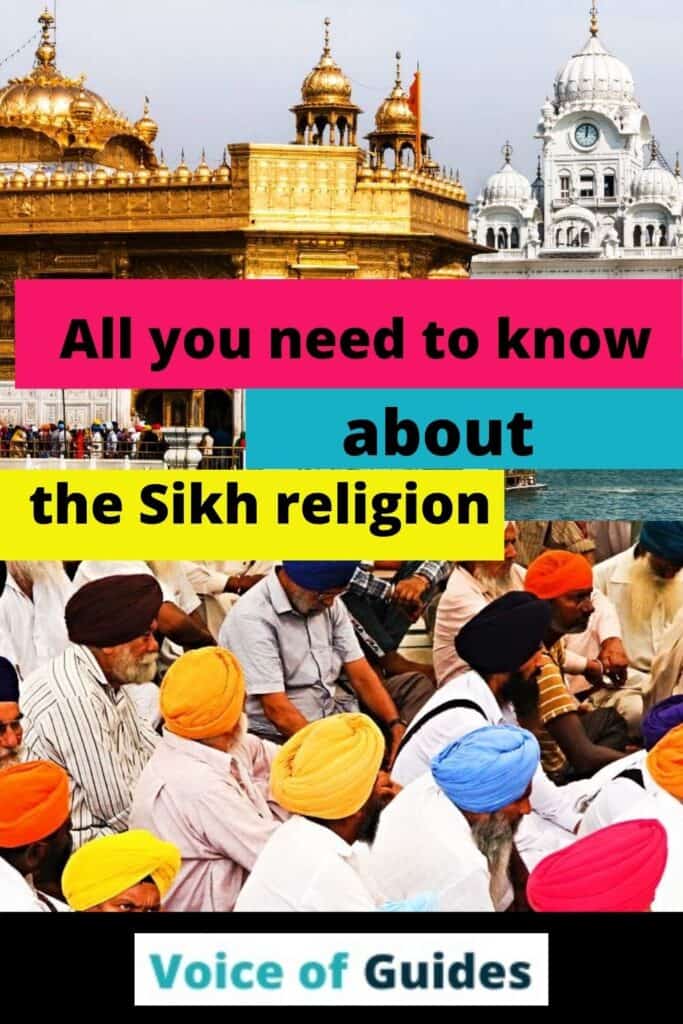

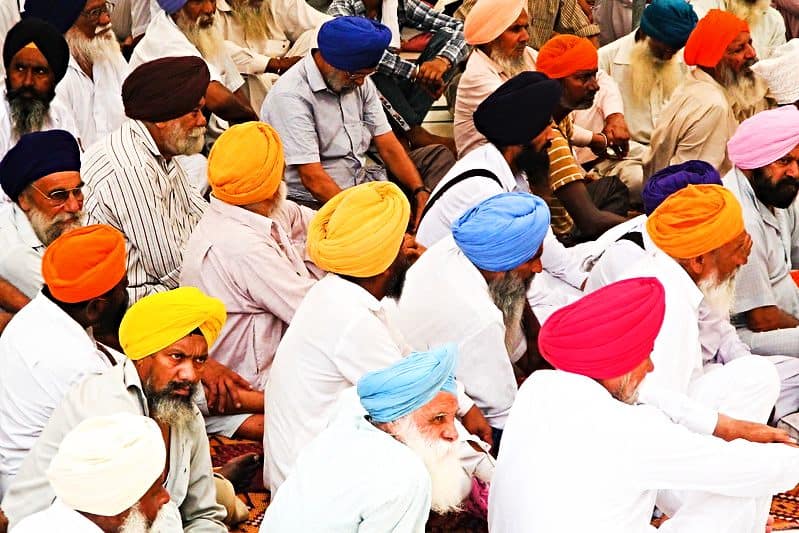

Pingback: 30 interesting facts and stories about India | Voice of Guides